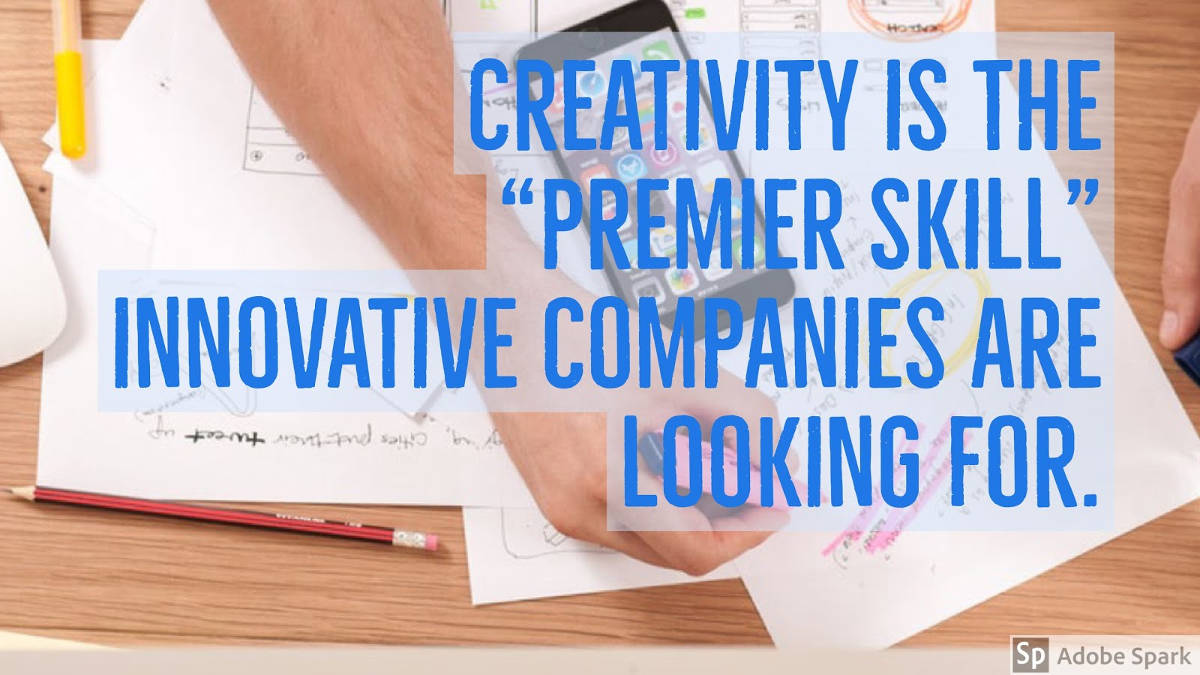Why Student Creation is the Hardest/Best Form of Assessment

The goal of assessment has traditionally been to measure student mastery. With that mindset, some students measure high while others do not measure up. While that seems pretty cut and dry, it can be problematic. The students who measure high tend to always measure high. And the students who don't measure up tend to experience disappointment over and over. For students who experience continued success, the consequence is that they believe in their abilities and continue to challenge themselves to achieve more. For students who don't measure up, the consequence is that they learn not to trust their own work and fall into a cycle of self-doubt. They tend to avoid challenging tasks and always take the easiest path to completion.
Why Students Prefer Creative Assessments
When students are able to go through a creative process (rather than taking a traditional test or quiz) to demonstrate their learning, the process includes benchmarks at which students receive feedback from their peers and their teacher. Feedback in this instance is not in the form of a score or a grade, so it feels less like a rating and more like an opportunity to improve for many students. While traditional tests and quizzes are intended by educators as an opportunity for students to improve, that is usually not how it feels from their perspective.The final product that results from a creative assessment is a unique expression of each students thinking and learning. Because it is unique, students are often proud and empowered to share that work with an audience beyond their teacher or classmates. These creative projects tend to be the ones students choose to share via digital portfolios or as part of applications to internships or even college. If the students are younger, these are the projects that are put on display at parent nights or open houses.
Why Creative Assessments Are a Challenge for Educators
In traditional tests and quizzes, answers tend to be correct or incorrect. Grading is measurable, simple, and usually efficient. Putting a number or value on student work in the form of a creative artifact is more challenging. Sometimes teachers meet this challenge by creating instructions and rubrics that resemble step-by-step recipes. Their students follow the recipe and create a product that looks just like their classmates' products. This is actually not a creative assessment at all. It is an exercise in ensuring students can comply with instructions.Another question from educators: How do we come up with these creative assessments? For many of us, both our experience as students and training as teachers comprised of readings, lectures, note-taking, studying, and test-taking for scores and certifications. The answer is that educators need both training in project-based learning (Ross Cooper and Erin Murphy's Hacking PBL is a great place to start) and opportunities to observe teacher leader colleagues who are successfully implementing that model in a tech-rich purpose-filled way. At St. John's Prep, a group of teachers who have excelled at this implementation and who want their colleagues to experience the same challenge and joy with their students banded together to create this video:
Wait... No More Tests and Quizzes? Ever?
That's not what I'm saying. Not even remotely. Short quizzes and summative tests have their place in every learner's academic experience. There are regulated, standardized, and necessary. They help colleges and professional organizations determine the readiness of their applicants. They have their place. At the same time, every learner deserves to experience an iterative creative process filled with plans, mistakes, feedback, and micro-successes along the way. In the course of day-to-day work for most professionals, this is the process:
Tools and ideas to transform education. Sign up below.
- We pose a question or are challenged with a task by a supervisor.
- We do some research. Usually this includes reaching out to our networks, crunching numbers and data, and consulting academic/scholarly suggestions.
- Based on the unique question/challenge and what we've learned, we come up with a solution.
- We ask for informal feedback from colleagues and friends we trust.
- We use that feedback to edit and revamp our work.
- The first, and still somewhat rough, draft of our idea is proposed to a supervisor.
- More feedback.
- More editing and revamping.
- Rinse. Repeat. You get the idea.... It's a process.
If the purpose of school is to prepare our students for the experiences that await...
If the purpose of school is to prepare them for the challenges and successes they will encounter...
If the purpose of school it to help learners build the skills they need for success in the modern professional world...It is worth noting:
If creativity is the "premier skill", then schools should focus their work on building creativity into lessons for their students. Student creation activities open the door to meaningful feedback, more honest relationships among learners and educators, and an environment that build the characteristics of creativity.
Encouraging student creation is hard, but it is also what is best for our students.
cross posted at www.KerryHawk02.com
Kerry Gallagher is the Assistant Principal for Teaching and Learning at St. John’s Prep in Danvers, Massachusetts. She’s also the Director of K-12 Education for ConnectSafely.org – internet safety non-profit in Palo Alto, California – a FutureReady Instructional Coach, ASCD Emerging Leader, and EdSurge Columnist. She served as a middle & high school teacher and digital learning specialist for over 15 years, and her passions include digital citizenship and effective integration of curriculum, pedagogy, and edtech. Kerry is a TEDx & keynote speaker and a lawyer by training. She is on social media @KerryHawk02 and her website is www.KerryHawk02.com
Kerry Gallagher, is Assistant Principal for Teaching and Learning at St. John’s Prep in Danvers, MA, and Education Director at ConnectSafely.
